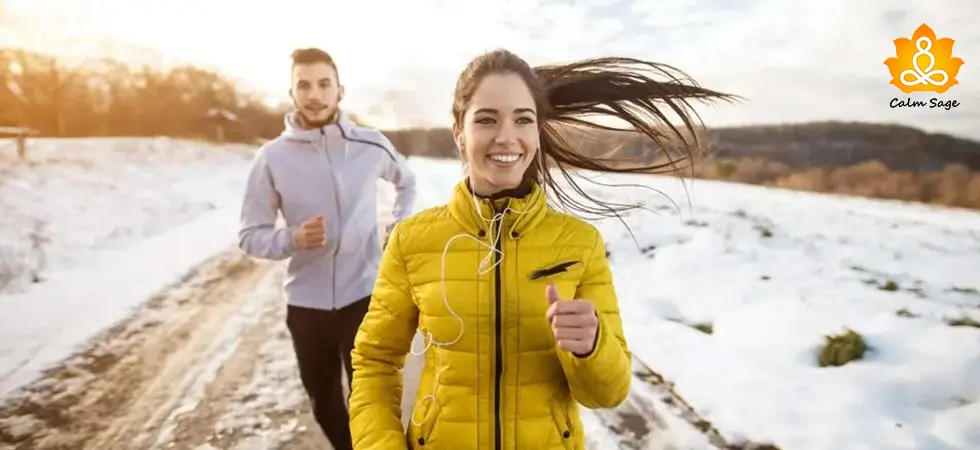How To Calm Your Fight & Flight Response?

Your body’s fight or flight response is a natural reaction that your brain initiates in order to deal with any type of threat. The fight or flight response was used by our ancestors because, during the early ages, a physical threat was more than we have now.
They used this as an instinct to protect themselves from any harm. Their brain would first analyze the threat and decide whether they are going to fight it or move away from danger so that it doesn’t harm them anymore.
However, the definition of threat has definitely changed over the years. Different people consider different things as threats. There can be physical, emotional, mental, social, and all types of situations that your brain can interpret as threats.
The problem here is, sometimes our brain misunderstands a safe situation as a threat and initiates the fight or flight response. Now that can be a problem! If you have experienced a false fight or flight response, you’re not alone.
Today, we’ll see how you can calm your fight-or-flight response.
Shall we begin?
Also Read: 51 Keep Calm Quotes To Help Your Mind Stay Calm
Why Do You Need To Control Your Fight Or Flight Response?
The fight or flight response is a natural response to anything that is recognized as threatening by your brain. However, sometimes our brain fails to understand whether a situation is safe or not, it mistakenly initiates the fight or flight response.
When your brain initiates a fight or flight response but you do not have any threat to spend that boost of energy on, you can start feeling anxious. The fight or flight response works on adrenaline, now imagine adding water to an already full jug, the water will spill and it’s going to be a mess everywhere.
Similarly, when you get a boost of energy (adrenaline rush) when you already have enough energy, you’re going to be a mess. Therefore, it is important to calm the fight or flight response in the absence of any danger.
Also read: Diathesis-Stress Model: Uses & How It Works
Have you ever experienced a strong fight or flight response and didn’t know what to do? Well, we know how you can handle such a situation. Want to know how to calm your fight or flight response?
Here you go…
How Do I Calm My Fight Or Flight Response?
In times of a false fight or flight response, your body deals with a lot of nervous energy which if not released can switch into anxious or panic mode. Sometimes our fight or flight response stays long after our threat is out of sight and that can also be very troubling.
However, no matter what the situation is, if you have an uncalled-for or unused fight-or-flight response, you need to calm yourself down and we’re going to help you do just that.
Here are some effective ways to calm your fight or flight response;
1. Engage in deep breathing:
when you’re in a fight or flight response, the nervous energy increases your palpitations and initiates irregular breathing. To control that, you need to start taking deep breaths to calm yourself down.
2. Know the cause of your fight or flight response:
sometimes we don’t notice that some situations tend to initiate a stress response. For example, having a cup of coffee on an empty stomach. Once you know the cause, try to stay away from such things.
3. Have acceptance:
once your fight or flight response is initiated, do not start panicking about it. Accept that your body is having a stress response and sit down, relax, and let your mind relax.
4. Indulge in some physical activity:
the fight or flight response fills with a sudden boost of energy so that you can save yourself from danger. Now, in this case, there is no danger but you need to channel your energy, and what better than engaging in some physical exercise to let off the extra energy you have?
5. Replace your thoughts:
the fight or flight response has a lot to do with your thoughts. When you experience an unwanted fight or flight response, identify your negative, anxiety arousing thoughts and replace them with positive and calming thoughts.
Also read: 5 Commonly Used CBT Techniques To Combat Mental Health Issues!
6. Get professional help:
in case you have been experiencing fight or flight responses quite frequently and it has started disturbing your life, know that it’s time to get some help. Try seeking some professional guidance because there may be some hidden triggers.
That’s All Folks!
I hope you found this blog about how to calm your fight or flight response helpful, interesting, and informative. Do share this blog with your friends and family so that we all know what to do when you experience an unwanted fight or flight response.
Thanks for reading.
Take care and stay safe.
Next Read:
How To Complete The Stress Response Cycle and Be More Relaxed




















